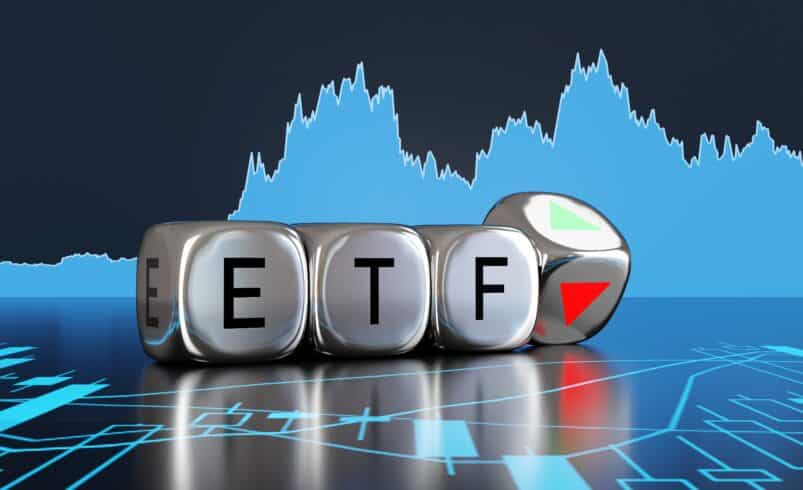Understanding the Key Factors That Influence Cryptocurrencies Values

Cryptocurrency values arise from a multifaceted mix of factors, including interest rate discrepancies, the interplay of supply and demand, investor sentiment, and overall confidence in the market.
These digital assets gain their worth from a range of critical influences. The balance between supply and demand, investors’ perspectives, and confidence in the market are paramount. Cryptocurrencies are unique in that they are not underpinned by government authority or physical assets; instead, their value stems from their usefulness, scarcity, and the perceived value attributed to them by users and investors.
The supply and demand dynamic is a key driver in setting cryptocurrency prices. When a cryptocurrency is in high demand but has limited availability, its value tends to increase. On the other hand, an upsurge in the number of tokens available or a wane in demand can trigger a decrease in value.
Market sentiment significantly influences the valuation of cryptocurrencies. Encouraging developments, like regulatory advancements, growing institutional engagement, or technological breakthroughs, typically boost prices. Conversely, negative factors such as security concerns, stringent regulations, or diminishing public interest can cause a price downturn.
Moreover, the valuation of cryptocurrencies is also affected by the wider economic climate and the confidence investors have in the market. Factors like market speculation, the volume of trades, liquidity-altering events, and overall economic indicators play a substantial role in shaping investors’ outlooks and, by extension, the market value of cryptocurrencies.
Understanding Cryptocurrencies
Cryptocurrency trading involves the exchange of digital or virtual tokens, which are secured through cryptography. These currencies are decentralized, often built on blockchain technology – a distributed ledger that records and validates transactions on a network of peers. Prominent cryptocurrencies include Bitcoin, Ethereum, XRP, and Litecoin, each notable for their size and recognition.
Cryptocurrencies facilitate the transfer of value independently of traditional intermediaries like banks. Their capacity for decentralization, enhanced privacy, and the introduction of innovative financial applications contribute to their growing popularity.
Differences Between Cryptocurrencies and Fiat Currencies
Cryptocurrencies and fiat currencies differ significantly, while both serve as mediums of exchange.
Governmental mandates and central bank policies grant their authority to fiat currencies, such as the US Dollar or Euro. In contrast, cryptocurrencies operate on decentralized blockchain networks, free from the control of any central authority.
While fiat currencies exist physically in forms like paper bills and coins, cryptocurrencies are entirely digital, stored in digital wallets, and transacted over their respective networks.
Central banks regulate the supply of fiat money, impacting inflation and economic growth through various monetary policies, including currency printing or destruction. In contrast, the creation of popular cryptocurrencies like Bitcoin results from mining, where participants validate transactions to earn tokens. Most cryptocurrencies have a predefined total supply set by their underlying protocols.
Cryptocurrencies facilitate transactions that, while recorded on public blockchains, do not explicitly identify the parties involved, offering a level of pseudonymity. Fiat transactions, however, are often more transparent, with regulated banks documenting the identities associated with financial accounts.
The value of cryptocurrencies is known for its high volatility, with significant price changes occurring within short periods. In contrast, the value of fiat currencies is generally more stable, influenced by factors such as interest rates, inflation, and macroeconomic conditions.
Primary Fiat Currencies in Cryptocurrency Trading
Globally, the most common fiat currencies used in cryptocurrency trading vary by region, yet they typically include the US Dollar (USD), Euro (EUR), Japanese Yen (JPY), and South Korean Won (KRW). These currencies are distinguished by their international recognition and extensive use as trade pairs on major exchanges.
Regional developments and changing market preferences influence a particular fiat currency’s prominence in crypto trading. Typically, traders convert fiat currency into cryptocurrency, although direct cryptocurrency payments bypass this process.
The Influence of the US Dollar on Cryptocurrency Markets
Fluctuations in the value and stability of the US dollar significantly impact cryptocurrency markets. Cryptocurrencies, such as Bitcoin and Ethereum, are often seen as alternative investments or safeguards against the devaluation of fiat currencies, and their value can be sensitive to changes in the dollar’s strength.
A substantial dollar weakening can make cryptocurrencies more appealing to investors looking to avoid the risks associated with the decline. This increased interest in cryptocurrencies can raise prices for these digital assets.
Moreover, governments’ approach towards fiat currencies is closely linked to the adoption and valuation of cryptocurrencies. Regions with favorable regulations for cryptocurrencies often see increased digital currency investments. Conversely, restrictive regulatory environments or outright prohibitions can suppress interest and negatively affect cryptocurrency values.
Recent Influences on Cryptocurrency Market Dynamics
The recent surge in Bitcoin’s value coincides with a downturn in the US dollar, evidenced by a drop in the dollar index from its peak. This appreciation in Bitcoin’s value is partly attributed to a diminished dollar appeal, mainly as US interest rates appear to have reached their zenith. The dynamics of interest rate changes can affect yield differentials and the relative attractiveness of the dollar.
The Role of Interest Rate Differentials
Interest rate differentials, determined by various countries’ central banks, represent the variance in expected investment returns across different currencies. These differentials, expressed in percentage points or basis points, are crucial in influencing currency valuations, international capital flows, and the attractiveness of foreign financial assets. Global investors pay close attention to these differentials due to their significant impact on foreign exchange rates and international investment decisions.
A country with higher interest rates typically attracts foreign capital for better yields, boosting the demand for its currency and increasing its value against currencies from countries with lower interest rates.
Central bank policies, inflation expectations, economic growth, and other macroeconomic factors influence interest rate differentials. Whether to control inflation or stimulate growth, changes in significant bank interest rates create inflation disparities that affect currency valuations and international capital movements.
Impact of Interest Rate Differentials on Currency Pairs
The exchange rate of a currency pair is directly affected by the interest rate differential between the two currencies. An increase in this differential can cause significant movements in currency pairs by altering the direction of international capital flow.
Nations with higher interest rates often attract foreign investment, driven by the prospect of higher returns. This capital inflow increases the demand for the country’s currency with higher rates, elevating its value against currencies from countries with lower interest rates.
In contrast, currencies from countries with lower interest rates may see a decline in investor interest, which can decrease their value. Interest rate differentials influence currency valuations and other economic factors such as inflation, trade balances, and international money flows. Central banks may adjust interest rates to manage domestic economic conditions, indirectly leading to variations in interest rate differentials.
The Effect of Market Sentiment on Cryptocurrencies
Cryptocurrencies, as speculative assets, are particularly susceptible to market sentiment – the overall attitude of investors towards specific cryptocurrencies or the market as a whole. An optimistic view generally stimulates buying activity, leading to higher valuations, while negative sentiment can reduce interest and result in declining prices.
The relationship between sentiment and the cryptocurrency market is bidirectional. Social media, news reports, and influential figures shape market sentiment, and in turn, positive or negative coverage influences investor attitudes. Adverse events or regulatory concerns can create a pessimistic view, leading to selling pressure.
Market sentiment can trigger volatility, often independent of actual market conditions. Investors use sentiment analysis and other analytical tools to inform their trading decisions. While sentiment is a significant short-term influencer, it should be considered alongside a comprehensive evaluation of technological developments, adoption rates, governance policies, and economic factors for informed investment decisions.
Conclusion
In conclusion, the valuation of cryptocurrencies is influenced by a combination of factors, including interest rate differentials, supply-demand dynamics, market sentiment, and overall investor confidence. Recent increases in the value of cryptocurrencies like Bitcoin correlate with a weakening US dollar and declining bond yields, positioning them as attractive alternatives for storing value. Market sentiment, shaped by news and social media, directly affects cryptocurrency valuations. However, it is essential to integrate sentiment analysis into a broader examination of market fundamentals for sound investment decision-making.
DISCLAIMER: It's essential to understand that the articles on this site are not meant to serve as, nor should it be construed as, advice in legal, tax, investment, financial, or any other professional context. You should only invest an amount that you are prepared to lose, and it's advisable to consult with an independent financial expert if you're uncertain. To obtain more information, kindly examine the terms of service and the assistance and support resources made available by the issuing or advertising entity. Our website is committed to delivering accurate and unbiased news, yet it's important to note that market conditions may change rapidly. Also, be aware that some (but not all) articles on our site are compensated or sponsored.








